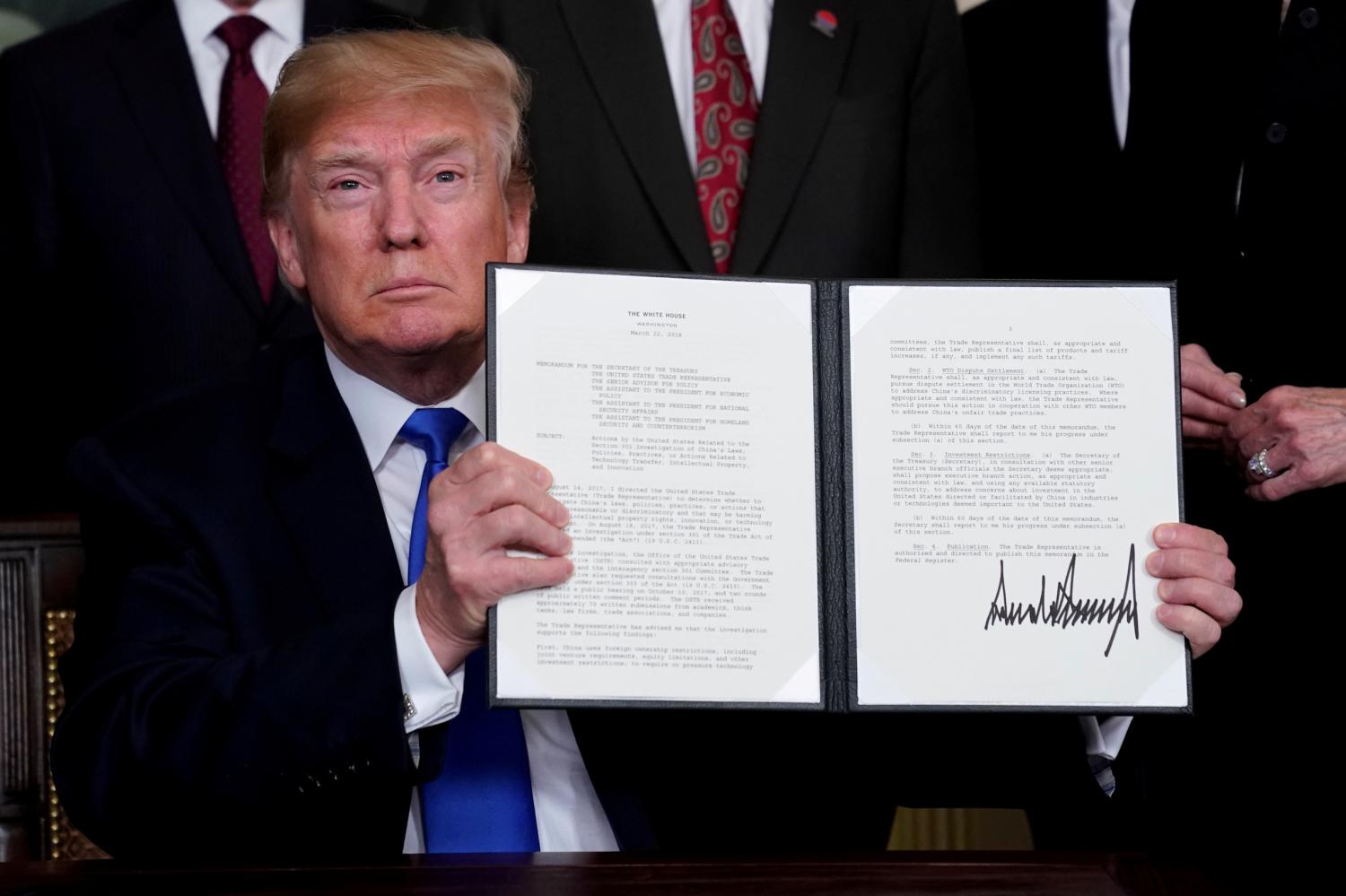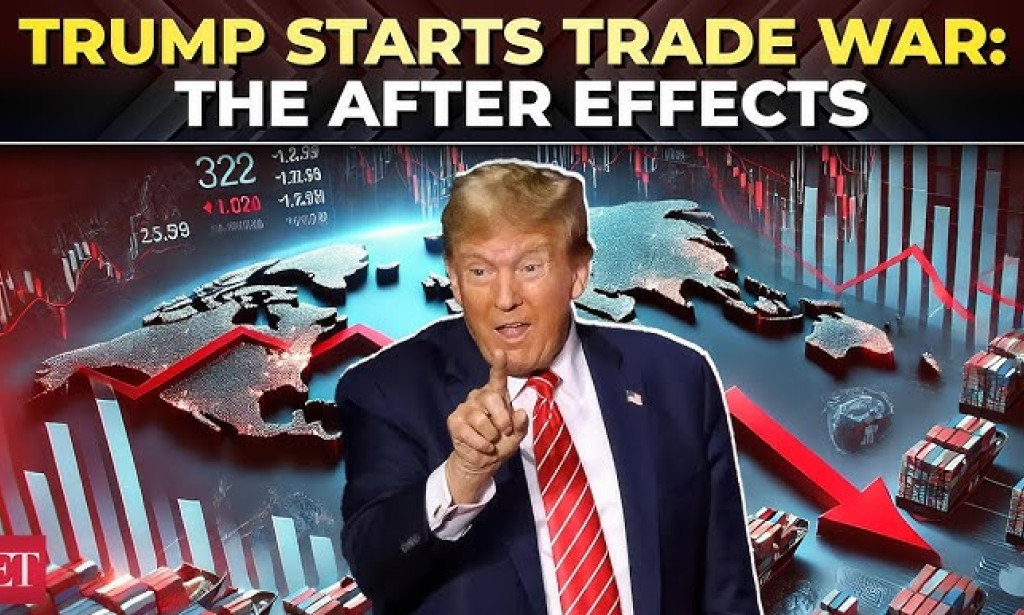Trump’s Trade Revolution & the Global Economy
A 100-Day Economic Experiment That Brought the World to the Brink
An investigation into Donald Trump’s radical tariff policies and their devastating impact on American workers, businesses, and global stability
For close to four decades, Donald Trump has proclaimed his love for tariffs, calling them “one of the most beautiful words I have ever heard.” But when the 47th
President unleashed his most ambitious trade experiment yet, the word became anything but beautiful for millions of Americans caught in the crossfire.
On April 2, 2025—a date Trump christened “Liberation Day”—the President gathered steel workers and auto workers in what would become one of the most consequential announcements of his second term. Standing before his supporters, Trump declared it “the day American industry was reborn” as he announced sweeping tariffs on over 180 countries and territories, ranging from 10% to 50%.
What followed was 100 days of economic chaos that brought the global financial system to the brink of collapse, devastated American farmers and truckers, and ultimately forced the President into a humiliating retreat when Wall Street said enough.
The Shock and Awe That Backfired
Trump’s “reciprocal tariffs” were meant to be, in his words, “a bold, bold shock and awe move.” The shock was real—but not in the way he intended. Within days of Liberation Day, stock markets plummeted, a trade war escalated with China, resulting in staggering 145% tariffs, and panic selling gripped the bond market.
The casualties mounted quickly. Molson Hart, which manufactures children’s toys in China, watched helplessly as a container shipment that would have cost $50,000 suddenly faced $84,000 in tariffs and fees. “I’m really tired, to be honest,” Hart said from his Austin, Texas, warehouse. “I wake up in the morning and my routine is now checking WeChat for Chinese suppliers, working the full day, then back to the same apps at night.”
For soybean farmer John Ash in North Carolina, whose family has worked the land for over a century, the uncertainty was paralyzing. “I’m going to plant about 50% less than I would normally because I don’t know what the price is going to be,” he said, planting his first crop of the season with deep apprehension about losing China, which buys 40-45% of his soybeans.
When Wall Street Said No
The turning point came when the “safest asset in the US”—government bonds—began heading toward a fire sale. Financial markets, both domestic and international, were in free fall. It was then that Commerce Secretary Howard Lutnick and Treasury Secretary Scott Bessent realized they had to act.
In a dramatic intervention that reads like a political thriller, the two officials pulled Trump’s key trade advisor, Peter Navarro—described by critics as “a demonstrably uninformed guy” and “perhaps the only economist in the world who agrees with Trump’s idea of reciprocal tariffs”—away from the Oval Office. In Navarro’s absence, they made an unscheduled visit to the President.
“They told him why they believed he needed to announce an immediate pause and to change course lest the economy fall into utter collapse,” according to sources familiar with the meeting. Trump agreed, and Bessent stood by as the President typed out a Truth Social post announcing the pause. The backdown was swift and comprehensive—virtually all reciprocal tariffs were dialed back to 10%, giving 90 trading partners 90 days to renegotiate.
Navarro, the architect of the tariff policy who had served four months in jail as what he called “a self-styled martyr for MAGA,” only learned of the reversal after the fact. He was shocked.
The Human Cost of Economic Nationalism
While Washington played politics, real Americans bore the cost. Mark Neves, a third-generation trucker who has worked in transportation for over 40 years, saw his work dry up as trade with China collapsed. “The tariffs now have caused me to work one day a week, two days a week, robbing from Peter to pay Paul,” he said, fighting back tears.
The irony was not lost on truck drivers and dock workers—many of whom had voted for Trump—when the President dismissed their suffering during a television interview. Asked about truckers struggling due to reduced port traffic, Trump responded: “That means we lose less money. When you say it’s slowed down, that’s a good thing, not a bad thing.”
“It makes me want to cry sometimes,” Neves said. “It’s not about China, it’s about us.”
Manufacturing, which Trump promised to revive, actually shed 8,000 jobs in May, the month after tariffs were introduced. Dan Turner, who runs a hydraulics company in Pennsylvania and voted for Trump, was hit with a $70,000 tariff bill on a $48,000 component from China. “To suck $70,000 out of a business with no good reason is very detrimental,” he said.
The China Gambit Goes Wrong
The most dangerous aspect of Trump’s tariff war was the escalation with China. What began as reciprocal tariffs quickly morphed into something approaching a trade embargo, with tariffs reaching 145% on Chinese goods and China retaliating with 125% tariffs on American products.
Former Obama administration China expert Evan Medeiros warned of the broader implications: “The Chinese have a lot more tools at their disposal to withstand the pain than the Americans do.” As an authoritarian state, China could mobilize resources and control its economy in ways democratic countries cannot.
The trade war also risked spilling over into actual conflict. “At some point, it’s conceivable that so much pressure is being exerted on the Chinese economy that Xi Jinping decides to bring national security into this debate and makes a move on Taiwan,” Medeiros cautioned. “That will be the moment we leave the domain of trade and enter the domain of geopolitics.”
The Ultimate Irony
Perhaps the cruelest irony of Trump’s tariff experiment was that it contradicted his core campaign promise to reduce the cost of living. Economic modeling by internationally renowned economist Warwick McKibben showed the tariffs would increase inflation by 1.5% in 2025, with the burden falling heaviest on working-class Americans.
Even the coffee sold at Trump Cafe inside Trump Tower—which will be subject to a 10% tariff—will soon cost around $8.30, close to 13 Australian dollars. Bananas, which are difficult to grow in most parts of the US, face the same 10% tariff. Walmart has already increased banana prices by 8%.
“If you ask who buys a lot of stuff made in China, it tends to be Americans lower on the income scale,” McKibben noted. “The tariff on China is a direct tax on basically the consumption baskets of working Americans.”
Corruption and Cronyism
The tariff system also created new opportunities for corruption. During tariff negotiations with Vietnam—which faced a 46% tariff—the country’s prime minister hosted Eric Trump to announce a $1.5 billion luxury residential complex by the Trump Organization. The government reportedly fast-tracked the project after intervention from President Trump.
Meanwhile, Donald Trump Jr. and other investors set up an invitation-only club called “the Executive Branch” in Georgetown, costing around half a million dollars to join, designed for business leaders wanting private meetings with Trump administration officials.
“When you combine a new tariff system that’s changing all the time with an administration that you can buy access to, you get what the Democrats are calling an invitation to corruption,” critics warned.
The Road Ahead
As of July 8th, Trump’s 90-day pause on reciprocal tariffs expired, with no comprehensive trade deals in sight. The President who promised to make America wealthy again instead unleashed economic chaos that, according to critics, had “no coherent plan behind the policy.”
Former US Trade Representative Katherine Tai, who served under Biden, summed up the broader concern: “We’re at a unique moment, a hinge moment in international politics in which the distribution of power among countries globally is shifting.”
The question now is whether Trump will listen to the voices telling him his tariffs are “a colossal act of self-harm,” or whether he will crash through with protectionist policies that risk not just economic damage, but global instability.
For businesses like Molson Hart’s toy company, uncertainty remains the only constant. “We don’t know what’s going to happen tomorrow,” he said. “We don’t know what’s going to happen in the next couple of months.”
As one Trump supporter at a North Carolina gun show put it, perhaps capturing the mood of a nation caught between hope and fear: “I think it might hurt first, but I think we’ll benefit from it in the long run. I think anything new sometimes you hurt from it, but if you recover from it and it benefits, I think in the long run you come out ahead.”
Whether America will come out ahead from Trump’s tariff experiment remains the $70,000 question—the same amount Dan Turner was forced to pay for a component that used to cost him nothing extra at all.
This investigation was conducted over several months, with interviews across Trump’s heartland examining the real-world impact of the administration’s trade policies on American workers, farmers, and businesses.


You must be logged in to post a comment.